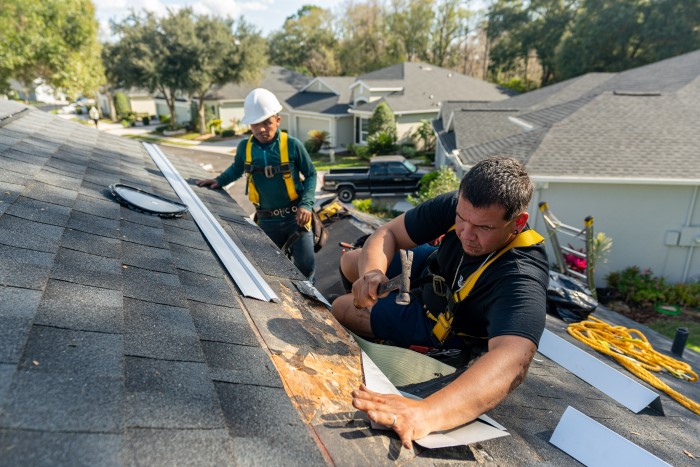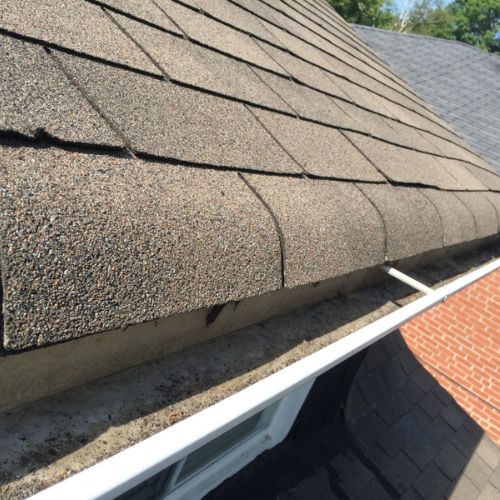Secret Factors To Consider for an Effective Roofing System Installation: Accomplishing Durability and Performance
In beginning on the trip of roofing system installment, one need to prioritize essential factors to consider to make sure both longevity and effectiveness. The option of products, customized to withstand neighborhood environment problems, plays a critical duty in keeping structural honesty. As we discover these elements, it comes to be obvious that an effective roofing installment is not just about covering a framework but regarding crafting a resistant and lasting remedy.
Selecting the Right Products

Climate plays a pivotal role in material option. In regions prone to hefty rains or snow, products like asphalt tiles or metal roof covering with high water resistance are advisable. Alternatively, in hot climates, materials with reflective buildings, such as amazing roof membranes or tiles, can help in reducing energy prices by deflecting sunshine.
Spending plan factors to consider additionally affect product choice. While costs products like slate or clay tiles offer lasting efficiency, they include greater upfront costs. Nonetheless, they can verify cost-efficient gradually as a result of their very little maintenance needs and prolonged life expectancy.
Finally, the architectural style of the building ought to balance with the roof covering material. For example, traditional homes may benefit from wooden shingles, whereas modern structures could select smooth metal surfaces. By thoroughly weighing these factors, you can pick products that line up with both functional and visual goals.

Understanding Roofing System Layout
Recognizing roofing system style is crucial in attaining a well-functioning and aesthetically pleasing structure. The design of a roofing affects not just the aesthetic charm however also the structural integrity and functionality of the building. An attentively made roofing system can enhance the total architectural style while guaranteeing efficient drain, insulation, and air flow.
Crucial element of roof covering design consist of the pitch, shape, and architectural support group. The pitch, or slope, figures out how efficiently water and debris are dropped from the roof surface area, affecting the life-span of roof covering products. Typical roof shapes include gable, hip, flat, and mansard, each offering unique benefits and visual high qualities. As an example, saddleback roofs are prominent for their simplicity and efficient water losing, while hip roof coverings supply exceptional security in high wind areas.
Structural assistance systems, such as trusses and rafters, are important in distributing weight and keeping the roofing's integrity. Proper style makes certain that the roof can hold up against ecological tons and withstand contortion. In addition, integrating functions like overhangs and eaves can safeguard the building's frontage and enhance power effectiveness by offering shade and minimizing warm gain.
Ultimately, a well-considered roofing layout balances develop, operate, and durability, adding to the long-lasting success of the setup.
Environment Factors To Consider

In warm and warm environments, roofing materials need to reflect, instead of absorb, solar heat to maintain energy efficiency and protect against too much thermal growth, which can lead to product deterioration - Keep Dry Roofing St Peters MO. On the other hand, in cooler areas, products should give adequate insulation to avoid warmth loss and hold up against freeze-thaw cycles that can cause cracking and other architectural problems
Moreover, the selection of color and covering can dramatically impact a roof covering's thermal efficiency, specifically in areas with extreme temperature variants. Regional building ordinance usually provide support on ideal materials and designs, mirroring regional environment problems. As a result, a complete understanding of weather problems is vital for choosing materials and designs that make certain a roof covering's optimal performance over its life expectancy.
Installation Best Practices
Efficient roof setup is an important element of guaranteeing long-lasting longevity and performance. Using premium tiles, underlayment, and flashing customized to the particular environment and structure design will improve the roofing's strength.
Similarly important is the preparation of the roofing system deck. Ensuring that the deck is tidy, dry, and structurally sound before installment protects against problems such as leakages and early wear. Correct ventilation is one more essential consideration, as it alleviates wetness build-up and thermal stress, thereby extending the roof covering's lifespan.
Precision in dimension and positioning throughout the installation procedure is vital. This entails exact positioning of tiles and precise interest to overlapping, which protects against water ingress. Using professional, competent labor guarantees these standards are met, minimizing the threat of errors that might jeopardize the roof covering's effectiveness.
Power Efficiency Techniques
Enhancing a roof's power effectiveness is a critical factor to consider find for lowering energy expenses and ecological effect. By selecting suitable materials and technologies, homeowners and contractors can dramatically boost the thermal performance of a roof covering, thus lessening energy intake.
Furthermore, the unification of appropriate click to investigate insulation is important in stopping warmth transfer in between the exterior and interior of a structure. Insulation products with high R-values, such as spray foam or inflexible foam boards, work in keeping a constant interior temperature, thus maximizing cooling and heating system performance.
Additionally, the integration of solar panels on roofs not just produces renewable resource yet can likewise offer color, more lowering warmth gain (Keep Dry Roofing St Peters MO). Innovations like amazing roofs, which use layers to reflect more sunlight, are likewise gaining appeal for their capability to reduce roof covering temperatures
Conclusion
To conclude, attaining a successful roofing system installation requires a detailed technique that incorporates the selection of top quality products tailored to certain weather problems, thoughtful layout considerations for optimum drain and structural honesty, and adherence to careful setup practices. These components jointly ensure the avoidance of moisture buildup and thermal stress and anxiety, consequently boosting the roofing's toughness and effectiveness. Integrating techniques to improve power effectiveness even more see post contributes to reducing upkeep demands and lowering power usage over the roof covering's life-span.